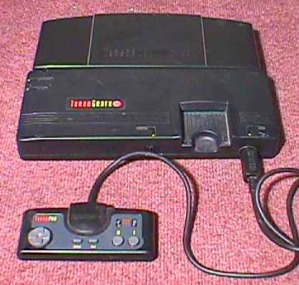- Third Generation Consolesthe History Of Video Games Free
- Third Generation Consolesthe History Of Video Games To Play
- Third Generation Consolesthe History Of Video Games Online
- Third Generation Consolesthe History Of Video Games On
Some of us grew up playing Duck Hunt on Nintendo, while others lived in the glory days of the Xbox generation, blasting up The Covenant through the eyes of Master Chief. We decided to geek out a little and create a timeline of video game console history just because. And because hey, who knows – it. E In the history of computer and video games, the third generation (sometimes referred to as the 8-bit era) began on July 15, 1983, with the Japanese release of two systems: the Nintendo Family Computer (commonly abbreviated to Famicom) and the Sega SG-1000. History of video games/Third generation of video game consoles. From Wikibooks, open books for an open world History of video games. Jump to navigation Jump to search. There were a number of second-generation video game consoles available in stores, but most everyone's attention was on the Atari 2600, as it had the most impressive library of games, and by a. The third generation of video game consoles began on July 15, 1983. The third generation began with the release of the Nintendo Family Computer, or better known as the Nintendo Entertainment System (NES) and Sega SG-1000. This generation helped end the North American video crash of 1983.
History[edit]
The IM-26 was released in the Soviet Union in 1988.[1][2] The system is noted for it's similarity to the Digi Casse.[1][3]
Development for the IM-26 stopped after 1992.[1]
Technology[edit]
The console display was included in game cartridges.[1][3]
The IM-26 is powered by two LR43 batteries.[3]
Gallery[edit]
The IM-26 with cartridge inserted.
The IM-26 with cartridge detached.
Two IM-26 cartridges.
External Resources[edit]
Wikimedia Commons has media related to: Elektronika IM-26 |
- Video Game Kraken - IM-26 page.
- Game Medium - IM-26 page.
References[edit]
- ↑ abcd'IM-26 by Electronika – The Video Game Kraken'. http://videogamekraken.com/im-26-by-electronika. Retrieved 16 November 2020.
- ↑'Electronika IM-26'. https://gamemedium.com/console/im-26. Retrieved 20 December 2020.
- ↑ abc'Pocket Legion - Elektronika IM-26 - YouTube'. https://www.youtube.com/watch?v=t0vGx0TSkG4&t=67s. Retrieved 16 November 2020.
Third Generation Consolesthe History Of Video Games Free
Trends[edit]
Improved hardware[edit]
By this point home console graphics became more capable, and were able to more easily represent characters and believable locations with colorful 2D graphics. Music began to take a bigger role in home game consoles.While consoles were still limited in their audio capabilities, many classic game soundtracks have their origins in this generation.
By this point, most home consoles contained most of their computer hardware in the console itself rather than in the cartridges, allowing for cheaper cartridges to be made. This freed up resources to either make cheaper cartridges, or to place enhancements in cartridges such as specialty chips that enhanced features such as audio. This generation also saw increased adoption of save game functionality, which was typically achieved with battery backed RAM located on the cartridge. Still, many games required gamers to save their progress by writing down a password which indicated their progress, and then re entering it when loading the game, which was a tedious endevor.
VHS consoles[edit]
A few companies attempted to leverage the audio visual capabilities of Video Home System (VHS) analog cassettes to improve the gaming experience, though no VHS consoles saw huge levels of success. By the fourth generation, companies pursing the same strategy would elect for the digital focused CD-ROM drives instead, though it would take till the fifth generation to see successful game consoles capable of full motion video.
Home consoles[edit]
Major consoles[edit]
- Famicom / Nintendo Entertainment System
- Sega SG-1000
- Sega Master System
- Atari 7800
Minor consoles[edit]
Third Generation Consolesthe History Of Video Games To Play
- Philips Videopac+ G7400
- Super Cassette Vision
Console versions of Home Computers[edit]
- Atari XEGS
- Amstrad GX4000
- Commodore 64 Games System
- Zemmix
VHS Consoles[edit]
- View-Master Interactive Vision
- Video Challenger
- Action Max
- Connor Videosmarts
Educational consoles[edit]
- VTech Socrates
- LJN Video Art
- BBC Bridge Companion
Obscure consoles[edit]
- Videoway
- Casio PV-1000
- My Vision
Third Generation Consolesthe History Of Video Games Online
Canceled consoles[edit]
- Halcyon
- Control-Vision
Handhelds[edit]
Third Generation Consolesthe History Of Video Games On
LCD Game Systems[edit]

- Ohio Art Etch-A-Sketch Animator 2000
- IM-26
- PreComputer 1000
Projector Game Systems[edit]
- Proscreen
- Light Games
References[edit]
Wikipedia has related information at Third generation of video game consoles |
← Second generation of video game consoles · Fourth generation of video game consoles →
